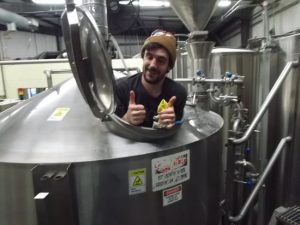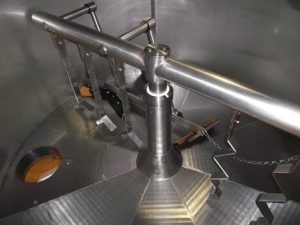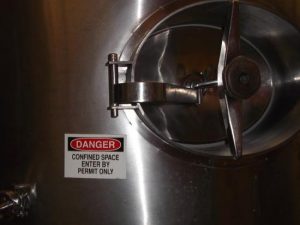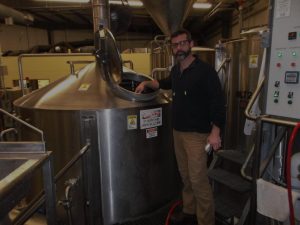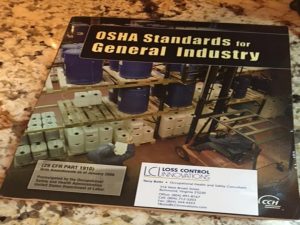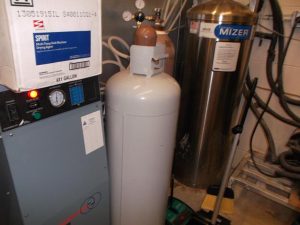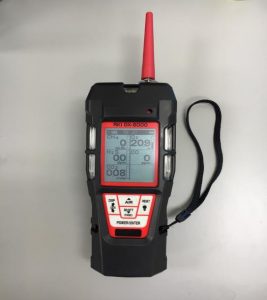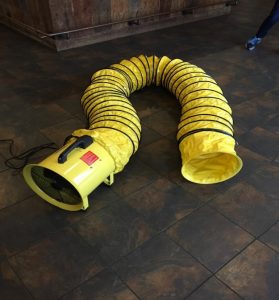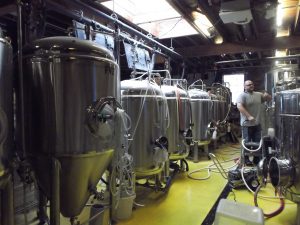The Benefits of Traffic Incident Management (TIM) Committees
by Jack Sullivan, CSP, CFPS
February 24, 2017
Fire departments, law enforcement, transportation, emergency medical agencies and towing and recovery operators are responding to an ever increasing number of roadway incidents involving crashes, medical emergencies, vehicle fires, and hazardous material events. As a result, emergency services personnel have implemented a number of proactive strategies for responding to all types of roadway incidents with special procedures for especially challenging environments like limited-access, high-speed highways, HOV lanes, bridges, tunnels and toll plazas. These measures include special apparatus assignments for certain highways, defensive apparatus positioning and blocking, high-visibility personal protective equipment, and florescent and reflective graphics on emergency vehicles. There is one more strategy that responding agencies should more fully embrace; Traffic Incident Management (TIM) Committees, Task Groups or Teams.
TIM Committees are a means to facilitate collaboration on pre-plans, training and coordination of resources from different agencies that respond to and clear traffic incidents as quickly as possible while protecting the safety of on-scene responders and the traveling public. Unified TIM procedures help to protect responders and incident victims and reduce the impact of incidents on traffic flow and congestion. TIM Committees also support the objectives of the National Unified Goal which prioritize responder safety and safe, quick clearance of roadway incidents.
TIM Committees usually consist of representatives of each of the core agencies that respond to roadway incidents including law enforcement, fire and rescue, emergency medical, transportation, towing and recovery, hazardous materials teams, public safety dispatch and communications, and the media. The committees are usually organized on a regional basis and most often are coordinated by state or local transportation agencies. Meeting frequency varies but quarterly sessions are very common. During times that regions are preparing for upcoming special events or large roadway construction projects the TIM Committee might meet monthly or even more frequently to work out solutions and procedures for traffic incidents that have the potential to disrupt thousands of motorists and endanger emergency responders.
In order for the TIM Committees to be effective, all responding agencies need to be represented regularly by the same experienced supervisory personnel. For example, fire department representatives should be a safety, training, company or chief officer with a full understanding and practical knowledge of the fire department apparatus, resources, staffing, and standard operating procedures for roadway incident responses. Other agencies should also be represented by personnel with similar responsibilities, knowledge and experience within their own agency.
TIM Committees can involve a number of activities including writing, reviewing and/or updating multi-agency response procedures, developing responder training, conducting incident reviews, coordinating special event planning and facilitating general interagency communications and collaboration. The Committee should elect a chairperson and arrange to document activity, communicate frequently with member agencies and coordinate regularly scheduled meetings.
One of the first goals of the TIM Committee should be to develop regional multi-agency traffic incident response procedures. Each agency involved should share and compare standard operating procedures or guidelines with the other response agencies and work out any potential conflicts so that all incident responders are using the same strategies and tactics.
Participating agencies develop a better understanding of the resources, staffing, response times and protocols for the other responders. Certain agencies might have different response times and staffing due to other priorities (i.e. snow fighting, construction projects, or other calls for service) or the actual time of an incident (i.e. regular business hours vs. 0:Dark:30 on a weekend morning).
All agencies should be using the same Incident Command System (ICS) in accordance with National Incident Management System (NIMS) protocols. Although this might be a done deal for public safety agencies, many towing and recovery firms and even some transportation agencies are still working to get all of their personnel trained and used to working within ICS protocols. This presents an opportunity for public safety personnel to assist other agencies with their training needs.
Communications at highway incidents are critical during the initial response and the mitigation phase of the operation. It is important for all responders to use the same terminology for radio and face-to-face communications. Lane designations are an excellent example where terminology can be standardized. Does the fire department use designations like left lane, left center, right center, right lane and right shoulder while the law enforcement personnel on scene are using lane numbers like Lane 1, Lane 2, Lane 3 etc.? Is the “fast lane” known as Lane 1 or is the “slow lane” considered Lane 1 in your region? There is no national standard for lane designation terminology and this is an area where there are often different terms used to identify lanes of limited access, high-speed highways which can lead to confusion and miscommunication during emergency responses.
Once traffic incident response procedures are coordinated and documented, they should be used as the basis for training all regional responders. The procedures should address the type and quantity of emergency vehicles dispatched initially to incidents, preferred apparatus positioning and blocking procedures, deployment of temporary traffic controls, responder safety strategies and quick clearance tactics. While many agencies train their own personnel there is a need for more multi-agency training opportunities. Tabletop exercises offer an excellent platform for multi-agency training sessions both for pre-planning and as post incident reviews. Develop scenarios for teams of responders to address in a tabletop setting using established procedures. Challenge them with unexpected problems (i.e. vehicle striking a blocking apparatus, equipment failures, inclement weather etc.) during preplan sessions and challenge them with developing solutions to any problems encountered during post incident reviews.
Post incident reviews should be done as soon as possible after an incident occurs. While agencies will often review incidents where there are significant operational problems it is less common for agencies to review incidents that were handled smoothly. For roadway incidents it’s important to review smooth operations to reinforce the benefits of following procedures and good coordination and collaboration with other agencies. Positive reinforcement goes a long way for highway incident safety and quick clearance. Make good use of traffic camera video where available for reviews and collaborate with other agencies to develop solutions to any identified problems. Ongoing multi-agency communications will contribute significantly to response coordination, effectiveness and responder safety.
TIM Committees play a critical role in preparing emergency responders for special events and road construction projects in the region. Increased traffic due to special events or road construction projects means more congestion and usually more traffic incidents with unique challenges for responders. Limited access to incidents, heavy backlogs and frustrated motorists can challenge even the most seasoned responders. TIM Committees can serve as a forum to develop plans for quick response to various types of incidents, arrange for strategically placed resources, quick clearance of disabled vehicles and pre-planned detours if needed. It’s important for fire departments to participate fully in these preparations to make sure operational needs are considered. Access to water supplies, emergency turn-arounds, pull-offs and/or exits, and any detours that can affect emergency responses should be considered and discussed. It may be necessary to change normal response procedures for some events or construction projects. This is also the time to request and provide for quicker response from towing and transportation agencies and safety service patrols. In some cases units might be assigned to staging areas for special events and large construction projects to assist with clearing traffic incidents quickly.
Transportation agencies have used the Manual of Uniform Traffic Control Devices (MUTCD) for years as their guide for the design and operation of roads and highways. In 2003, the MUTCD added Chapter 6-I which specifically addresses temporary traffic control measures for traffic incident management areas. Chapter 6-I provides guidance for all agencies responding to traffic incidents including fire departments and other public safety agencies. Transportation agencies can help public safety responders understand and implement procedures that comply with MUTCD guidelines including any state supplements that might be published. TIM Committees serve as the perfect forum for all agencies to review and discuss MUTCD guidelines and implement any changes needed in local operations for compliance. The TIM Committees also help all members to stay current with other rules, regulations, and standards as they develop or change.
Contact your state and/or local transportation agency to determine if there is already a TIM Committee established and meeting in your region. If there is, assign department personnel to attend the meetings regularly to represent your department or agency. If a TIM Committee doesn’t currently exist in your region, consider taking a leadership role in bringing all the appropriate agencies together. Invite other agencies to join you in forming a regional team and begin meeting on a regular basis.
An excellent resource for emergency responders to stay current about all aspects of roadway incident safety is the Emergency Responder Safety Institute (ERSI) website at www.respondersafety.com. ERSI also offers free online training on a variety of roadway incident safety topics through their Learning Network. The Federal Highway Administration (FHWA), Emergency Transportation Operations (ETO) team also has a website full of useful resources at: https://ops.fhwa.dot.gov/eto_tim_pse/about/tim.htm
Most regions have seen an increase in the number of emergency calls they handle involving roadway incidents. The safety of responders is threatened every time personnel work near moving traffic. The chance of a secondary crash is high and agencies need to take proactive steps to protect their personnel, the victims of the initial incident and any other motorists in the vicinity. TIM Committees serve a vital role in helping to prepare, train and organize our responders to provide safe and efficient emergency operations in order to mitigate incidents and resume normal traffic flow as quickly as possible.
Jack Sullivan is Managing Partner of Loss Control Innovations. He is a Certified Safety Professional (CSP), a Certified Fire Protection Specialist (CFPS) and an authorized OSHA Outreach Instructor. Jack is also a Technical Member of the National Committee on Uniform Traffic Control Devices (NCUTCD). He is currently assigned to the NCUTCD Temporary Traffic Control Committee that is responsible for Chapter 6-I of the Manual of Uniform Traffic Control Devices (MUTCD). He teaches TIM & Responder Safety Workshops for emergency responders and is also a Master Instructor for the FHWA SHRP 2 – TIM Train-the-Trainer Workshops being presented nationwide.

